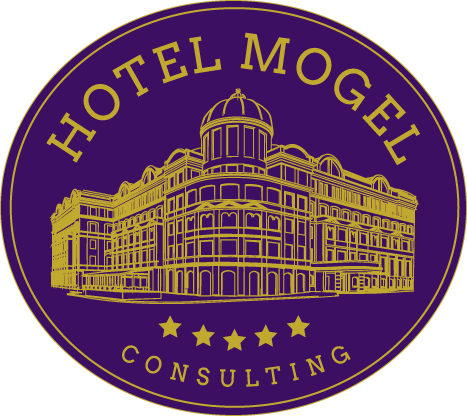A Framework for the Wild World of Welltech
When it comes to wellness for hotels, to get people’s attention, we often start with the total addressable market (TAM). As of EOY 2022, the Global Wellness Institute estimated the global wellness economy at $5.6 trillion with an 8.6% CAGR to reach $8.5 trillion in 2027. That’s a tremendous opportunity and huge growth, all stemming from many personal factors that can be summarized in the phrase, “If you don’t make time for your wellness, you will be forced to content with your illness.” That is, consumers are voting with their wallets for healthier lifestyles, and as they do at home they will expect from hotels.
Wellness Relies on IT
Where this intersects with hotel technology is that, first and foremost, any and all wellness programming must now be operationalized in a labor-efficient manner, and then merchandized effectively across the entire guest journey in order to generate throughput and profitability. Connected systems and centralized data are thus the engine that powers the wellness experiences that hotels can offer onset.
Before getting into the wellness technology (welltech) applications, here are some more specific ways where IT professionals become essential for commercializing hotel wellness going forward:
- Using marketing systems that can seamlessly merchandize wellness offers or experiences within the prebooking, prearrival, onsite and post-departure stages
- Configuring APIs, a CDP or RPA to increase the data connections so that you can better segment or target your loyalty guest pool with news or offers related to wellness
- Smart staff scheduling to enable flexible shifts and personalized service delivery as well as learning management systems for faster onboarding
- Task automation so that the spa therapists or other wellness practitioners can focus on the guest
- Investigating machine learning or related tools that provide features like multivariate testing, dynamic availability, sentiment analysis itinerary builders or one-to-one marketing offers
What we would also stress with any strategic discussions about wellness is that this area can provide a strong ‘reason to visit’ for a property that will induce more demand for overnight stays. Tracking this reason to visit nowadays means having strong analysis and reporting tools so that you can examine metrics like TRevPAR, ADR, direct booking share, LOS and lead time pace to see how this ancillary programming is actually performing and supporting the bottom line.
Welltech as Innovative Labor-Light Experiences
Let us first say that the most important element of wellness is (and will remain as such for quite some time) touch. That is, the emotional rapport that’s built between the guest and the staff, which for wellness is most likely to occur within the spa.
The problem, however, is that great spa professionals are in short supply. Hence, the advent of welltech, in all its various forms, presents hotels with a way to augment their wellness footprints in a scalable way that’s largely untethered by the traditional requirement to staff up. Welltech can therefore present itself as ‘set it and forget it’ spa technologies (Spatech), items in the guestroom that promote better sleep (Sleeptech), electronically-enhanced gym equipment (FitTech) and advanced diagnostic machinery that can tell guests more about their genetic or epigenetic makeups. (Foodtech can also be included here, but that’s a whole other can of worms!)
Spatech in Focus
Focusing specifically on spatech, this obviously pertains mostly to those hotels that already have a spa or wellness center. While it may be possible for resorts with some available land to build out a new facility (with the right capex and municipal approvals in place), this is orders of magnitude harder for an urban property to do. Nevertheless, spatech may work to round out other traditional spa treatments or thermal bathing experiences, as well as also present an opportunity for converting a no-longer-viable space like a retail outlet or a tucked-away business center.
To start, know that there are dozens of great spatech suppliers, but the machinery that lets a spa practitioner set a guest up then be largely hands-off for the next 20-30 minutes can come with a hefty price tag. In that sense, what we advise is to focus first on the senses to create themed experiences for guests. The most well-practiced application here would be to look for ways to augment a contrast therapy-focused spa (thermal bathing, sauna, salt room, experiential showers, ice baths, snow rooms) with an infrared (IR) sauna or pod and IR-heated loungers or relaxation chairs. Related to this, while cold exposure is increasingly being cited as beneficial for the body, cryotanks and cryofacials require training and direct staff interactions (for safety reasons at least).
If we dwell on the use of light wavelengths for a moment, IR is but one range that can be used to help guests feel better as part of an add-on experience. Red light therapy (RLT) has been used for pods or blankets, or for handhelds and wearables that can also be put in the guestroom. And if you’re looking for something even more sci-fi, non-thermal laser (NTL) has promising results for more medical treatments. Circling back to the senses, beyond light and cold, there’s sound in the form of meditation pods, binaural beats that can be added into other experiences and gravity wave equipment, while cycling air pressure or oxygen concentrations in the air (CVAC and HBOT) present emerging applications to offer guests welltech treatments that are both cutting edge and effective.
Sleeptech as the Foundation
Within the longevity community, the evidence is increasingly pointing to sleep as the foundation of bodily health. Without high-quality sleep, our moods deteriorate, our cognition suffers, our immune systems are weakened and weight loss becomes increasingly harder. We all know this to some extent, and yet traveling often leads to disrupted sleep rhythms (especially when jumping continents).
This has led to the rise of sleep tourism, and indeed for every property the incorporation of sleeptech presents a relatively efficient way to help guests get a better night’s rest. After all, only some people will use the spa, but every hotel guest wants good sleep. For this reason, while sleep is at the core of one’s wellbeing, for hotel brands it’s also an opportunity that’s evergreen (“Everdream?” We joke…).
What hotels can do to formulate their sleep programming is to start by looking at each of the elements that influence quality sleep hygiene. For climate, you want noiseless HVACs with advanced filtration for cleaner air, in addition to smarter controls so that the ambient temperature can be attuned to optimal levels for slow wave then REM sleep cycles. Next, we return once more to lighting wherein the overhead LEDs are often laden with blue light that tells the body that it’s daytime. Cove or low-positioned, softer lighting helps from a design standpoint, while the gold standard is to switch to circadian-adjusted bulbs that can transition to red-amber to imitate sunset and the onset of sleep. While discussing design, other factors may include motion-activated lighting around the bedframe so that no overnight lights need be turned on during nocturia events. Even something as simple as having blue light blocking glasses available shows that you care.
Getting more advanced, beds are no longer just mattresses but full-on bedding systems. Many of the leading manufacturers can now include temperature and moisture controls as well as built-in air filters to remove carbon or dust particles. Wearables in the form of wristbands and smart rings are also now in vogue as they can provide great data for guests on factors involved with sleep architecture such as blood oxygenation levels, wakefulness after sleep onset (WASO) and heart rate variability (HRV). Finally, for activating other senses in a positive, sleep-enhancing way, think gravity wave installations under the mattress, calming soundscapes or vitamin-infused showers.
Then All the FitTech
As you might already be able to tell, welltech is indeed a wild world insofar as all the various options and vendors for those options that you have at your disposal, from gargantuan machines in your spa through to the apps and smaller devices that guests can rent or are packaged into offers. There’s a bit of shopper’s paralysis, and that’s why we built the framework around hotel system connections, then sleeptech and spatech. Those are the best places to start for building out a plan for using technology to enhance your revenues from wellness over the next five years. Nevertheless, it’s a wild world, and to round out the conversation of areas you can investigate, let’s touch on the aforementioned diagnostics, fittech, foodtech.
For fittech, the primary step before evaluating your options is to think of your fitness center as a reason to visit rather than checking the box. How can you uplevel this amenity so that it is a brand differentiator? You can look at state-of-the-art machinery to complement the classic gym setup of dumbbells, strength trainers and cardio machines with your choice of isometrics, isotonics or off-balance trainers. But as any fitness brat well knows, recovery is just as important as the workout itself, with a whole new breed of massage guns, vibration plates, compression pants, RLT wraps or cold packs to help you reduce the chance of joint injury or muscle strain – all of these can be packaged or made rentable.
And for when it comes to mobility-related issues, one emerging area to look at might be augmented reality (AR) movement tracking, gait analysis and sports analysis to offer personalized corrections either alongside a trainer or independent of one. Finally, mobility issues via muscle imbalances along with body fat composition and bone density can be diagnosed using scanners like the dual energy x-ray absorptiometry (DEXA) for more precise suggestions.
And Ending with Revenues from Diagnostics
This last point about DEXA brings us to diagnostics, which is a domain where hotels can realize huge gains by cluing guests into their genetic and epigenetic (which genes are turned on and off) makeups in order to help them adjust habits back at home as well as to augment the rest of the guest stay. If there’s a biomarker, there’s a test you can take to know more about yourself. Significantly, people are willing to travel to specific destinations and pay for elaborate multi-night packages that incorporate these sorts of screenings along with consultations or personalized recommendations.
For instance, the field of nutrigenomics looks into factors like the people who specific lack a gene that facilitates the efficient absorption of vitamin B12 into the body, implying that said individuals would benefit from B12 IV therapy or sublingual tablets. One may glean this from a test at a regular clinic or one purchased off the internet, but hotels can also help customers discover these sorts of bioindividual characteristics that can impact their long-term health.
Yet other longevity-clinic-in-a-hotel setups are offering gut microbiome assessments that can have implications as profound as those uncovered by genomic sequencing. An example here would be that only roughly half of all people have the right bacteria to convert the beneficial ellagic acid in pomegranate seeds into the postbiotic urolithin A that’s being studied as a strong mitochondrial booster, indicating that those people without this specific strain would benefit from urolithin A supplementation.
Hormone blood panels can also inform hormone replacement therapy (HRT) alongside peptide treatments – both of which are becoming popular offerings at high-end resorts building out clinics. Next, epigenetic clock tests can give a good baseline for how lifestyle factors are impacting a person’s longevity over time. Key here is that one biological clock test is fine, but taking one repetitively year over year will help to keep people on track with their health goals.
After all, you can only manage what you measure, and what better way to manage it than to go on an annual retreat as a check-up in an idyllic location? For the last time, it’s a wild world, but there’s a method to the madness. Luxury hotels around the world are already building programs that help guests discover their own bodies to improve their wellbeing…and they’re charging thousands of dollars per night for these experiences. What we’re suggesting is that every hotel can play at this game; it’s just a matter of theming your approach and have a strategic vision.




